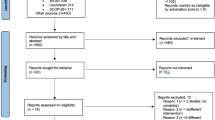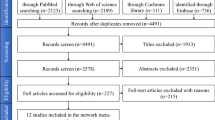Abstract
Data sources A search of electronic databases (Embase and PubMed) was carried out along with manual and grey searches of published and unpublished journals. Publication year was from first available until 23 August 2018.
Study selection Titles and abstracts from the original search were reviewed by two authors. Studies were chosen for full-text analysis and data extraction after inter-reviewer agreement. Disagreement was resolved by discussion and Cohen's kappa was used to measure inter-reviewer agreement. An initial search gave 2,197 articles and, following screening, 18 publications were included in the study. Five articles were case series and ten were case reports describing one to nine cases. Three publications reported on comparatively large sample sizes, one prospectively and two retrospectively. None of the studies had control groups or blinding. The QUADAS-2 tool was used for quality assessment. Studies were deemed to have high, low or unclear levels of bias by two examiners. All were considered high risk of bias. Publications included fulfilled the following criteria: English language, human studies, endosseous osseointegrated dental implants, explantation technique described and reason for explantation clearly reported.
Data extraction and synthesis Data extraction followed the Preferred Reporting Items for Systematic Reviews and Meta-Analyses (PRISMA) guideline process. Studies chosen for analysis were examined and the following data parameters were included: study design, number of patients, number of implants removed, implant system, reason for explantation, explantation technique and its success or failure, complications, flap access, socket grafting and immediate implant placement.
Results The following five techniques for explantation of dental implants were identified: reverse torque, trephines, piezosurgery, burs and laser-assisted explantation. Reverse torque was the most commonly described technique (284 implants) with 87.7% success. Burs were used to remove 49 implants with 100% success, while trephines were used for explantation of 35 implants with 94% success. Piezosurgery and Er, Cr: YSGG laser removed 11 implants and one implant, respectively, with 100% success. One study reported perforation of the maxillary sinus floor following the use of a trephine technique, while another reported the fracture of three implants using reverse torque. The quality of the studies and lack of available data prevented further analysis. Results were presented in a narrative format.
Conclusion The authors recommend reverse torque as the first choice for explantation. Despite its inferior success rate, it is the most conservative technique in terms of bone removal and flap access, meaning there is a greater opportunity for immediate implant placement.
This is a preview of subscription content, access via your institution
Access options
Subscribe to this journal
Receive 4 print issues and online access
$259.00 per year
only $64.75 per issue
Buy this article
- Purchase on Springer Link
- Instant access to full article PDF
Prices may be subject to local taxes which are calculated during checkout
Similar content being viewed by others
Author information
Authors and Affiliations
Rights and permissions
About this article
Cite this article
Young, L., Brown, T. & Lamont, T. A comparison of techniques for the explantation of osseointegrated dental implants. Evid Based Dent 21, 126–127 (2020). https://doi.org/10.1038/s41432-020-0133-3
Published:
Issue Date:
DOI: https://doi.org/10.1038/s41432-020-0133-3



